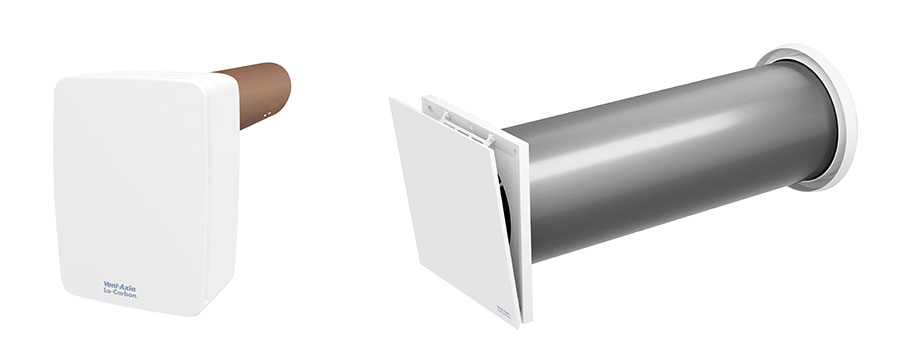Leading ventilation manufacturer Vent-Axia has welcomed the publication of the amended PAS 2035/2030:2023 which now aligns with Approved Document F (Means of Ventilation) of the Building Regulations. The British Standards Institution (BSI) has published an updated PAS 2035/2030:2023 document in light of the urgent need to decarbonise 27 million UK homes, the document describes how to conduct retrofits on existing dwellings to improve their energy efficiency. PAS 2035/2030:2023 sets out best practice in providing ‘whole house’ retrofits for domestic dwellings from project inception to handover and evaluation.
Since June 2021, compliance with PAS 2035 and PAS 2030 has been mandatory for all companies installing Energy Efficiency Measures (EEM), including domestic retrofit, under the TrustMark scheme and all public sector funded retrofit measures. The new updated guidance keeps in step with Part F of the latest Building Regulations by ensuring ventilation is considered when installing EMM. A key addition to the updated Part F for installers was a new sub section ‘Installing Energy Efficiency Measures’ in existing properties, which directed them to undertake an assessment when EEM are added to see if additional ventilation was required. PAS 2035/2030:2023 directs installers to Table 3:1 and Diagram 3.1 in this sub section of Part F to calculate new ventilation requirements via its simplified method.

L-R: Vent- Axia Lo-Carbon Tempra and Lo-Carbon Heat Save
Part F’s simplified method involves counting the energy efficiency measures that have been added and then using Table 3.1 in Part F to classify whether they are minor or major. Homes are then allocated to Category A, B, or C depending on the number of minor and major measures as set out in Diagram 3.1, with A the lowest and C the highest. The category then determines what ventilation is required. The simple solution to comply with Part F is for installers to choose continuous ventilation for existing homes since it is compliant with both category B and C and is the easiest and safest way of complying every time. However, PAS projects are likely to involve deep refurbishments of properties. So, in PAS projects to maximise both energy efficiency and ventilation the ideal solution is heat recovery ventilation.
 “At Vent-Axia we welcome the publication of the amended PAS 2035/2030:2023 since it aligns with Part F and will help protect the health and wellbeing of inhabitants from indoor air pollution and protect buildings from damp, condensation and mould. PAS offers some valuable Best Practice guidance on whole house retrofits for social housing. This is particularly valued as currently Reduced Data SAP (RdSAP) is not fit for purpose in its current form, as it does not allow the performance of MVHR into the calculation and has prohibitively high, and unrepresentative defaults for the energy used and saved. Since PAS projects often involve deep refurbishments, the ideal solution to save maximum energy and emissions and comply with the requirements of PAS 2035 in the social housing sector is heat recovery ventilation.” says Natasha King, Product Manager, Vent-Axia (pictured).
“At Vent-Axia we welcome the publication of the amended PAS 2035/2030:2023 since it aligns with Part F and will help protect the health and wellbeing of inhabitants from indoor air pollution and protect buildings from damp, condensation and mould. PAS offers some valuable Best Practice guidance on whole house retrofits for social housing. This is particularly valued as currently Reduced Data SAP (RdSAP) is not fit for purpose in its current form, as it does not allow the performance of MVHR into the calculation and has prohibitively high, and unrepresentative defaults for the energy used and saved. Since PAS projects often involve deep refurbishments, the ideal solution to save maximum energy and emissions and comply with the requirements of PAS 2035 in the social housing sector is heat recovery ventilation.” says Natasha King, Product Manager, Vent-Axia (pictured).
Historically heat recovery ventilation has been delivered by a central ducted heat recovery unit. However, this solution presents a number of issues for the installer. The biggest barrier is that in retrofit it can be difficult to install complex duct runs within an existing dwelling. PAS 2035 covers centralised systems but also recognises alternative flow heat recovery devices (AFHR) can be used for those rooms that are difficult to serve via ducting. The Heat Recovery Retrofit Solution from Vent-Axia has been specifically designed with this philosophy in mind, for easy, lower cost retrofit of heat recovery to save maximum energy and emissions and comply with the requirements of PAS 2035 in the social housing sector. It replaces a complex central ducted heat recovery unit, with smaller easy to install wall and ceiling units, dramatically reducing the ducting and therefore the cost of the installation.
The Heat Recovery Retrofit Solution range consists of three different Mechanical Ventilation with Heat Recovery units, which can be used together to help maximise energy savings by introducing heat recovery to the property. MVHR uses the heat from stale air that is being extracted to warm up the fresh air coming in. Therefore, bringing in fresh but pre-warmed air, providing ventilation while also saving energy. The range comprises: the Lo-Carbon Heat Save, Lo-Carbon Tempra which is wall mounted and the Lo-Carbon Calido for use upstairs utilising a simplified ducting system that can run within the home or in the roof space. By using these units together as a Heat Recovery Retrofit Solution it will help maximise energy savings by introducing heat recovery to the property, comply with the requirements of PAS 2035, and provide a simpler, lower cost installation.
Vent-Axia has developed the Heat Recovery Retrofit Solution to help solve social housing’s problem of how to both cost-effectively improve the energy efficiency of properties without detrimentally affecting IAQ, which would damage the health of occupants and the property through condensation and mould. MVHR offers an easy to install and cost-effective solution for social housing providers to help solve the energy efficiency retrofit conundrum.
If you would like to learn more about Vent-Axia’s Heat Recovery Retrofit Solution, visit https://www.vent-axia.com/HeatRecoveryRetrofitSolution. For further information on all products and services offered by Vent-Axia telephone 0844 856 0590 or visit www.vent-axia.com.
Images © Vent-Axia
- Log in to post comments













